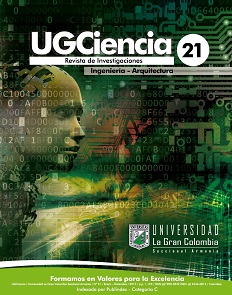Reactivity of the co-combustion of coal-sludge
DOI:
https://doi.org/10.18634/ugcj.21v.1i.429Keywords:
Cocombustion, thermogravimetric, thermal events, reactivity, activation energiesAbstract
In order to give an energy efficiency to sludge generated in a wastewater treatment plant, the reactivity of the combustion of a coal-sludge mixture was studied, looking for competitiveness as fuel and the reducing their impact on the environment. Thermogravimetric techniques were used as a central source for the analysis of reactivity of sludge and the coal-sludge mixture, grouped in proportion 1:9, 3:7, 7:3, 9:1, 1:1, always using coal coming from Valle del Cauca. The sludge was preheated to 105°C in order to prevent microorganisms and the organic matter unfold and alter their physicochemical conditions. The activation energies weighted average were determinated, Em, establishing that way the correlation between thermal events and kinetic parameters. The combustion profiles showed distinct thermal events for sludge and coal. The coal-sludge mixture had predictable events arising from the characterization of both fuels. The sludge individually treated exhibited a high reactivity (Em of 47.46 KJ/mol) higher than coal (Em of 134.69 KJ/mol), which encourage its use as a fuel. From mixtures analyzed, the mixture that exhibited higher reactivity was 1:9 (coal-sludge) with a value Em of 48.16 KJ/mol, while the mixture 9:1 had the lowest reactivity index with Em of 144.59 KJ/mol. At higher value of MV/CF the lower value of Em is obtained, this indicate a greater reactivity and vice versa.Downloads
Download data is not yet available.
Downloads
Published
2015-01-27
Issue
Section
Artículos Resultado de Investigación
How to Cite
Reactivity of the co-combustion of coal-sludge. (2015). UGCiencia, 21, 91-102. https://doi.org/10.18634/ugcj.21v.1i.429







